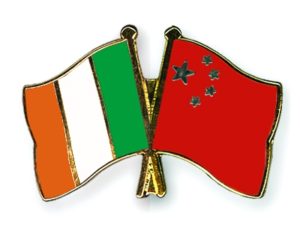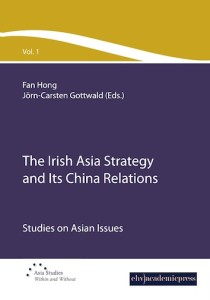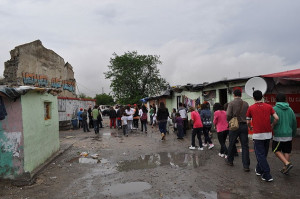Sean O’Toole – Architectural Solutions To Slums And Earthquakes
Mail&Guardian. August 2014. Seismic design is not a major theme in local architectural circles, and for good reason: we don’t have many earthquakes. But, in addition to Tuesday’s 5.5 magnitude quake, there have been some significant incidents in South Africa. A walk through contemporary Tulbagh, a bucolic winelands village nestled beneath the Winterhoek Mountains, now offers few reminders of the devastating 6.5 magnitude earthquake that occurred there in September 1969.
While earthquake readiness is a marginal topic in local debates, where slum settlements and urban sprawl are hot topics, the 25th world congress of the International Union of Architects (UIA), which is currently taking place in Durban, has seen numerous presentations on the subject.
On Monday, Cameron Sinclair, co-founder of Architecture for Humanity, a nongovernmental organisation that delivers architectural solutions in disaster and conflict zones, spoke to a capacity audience about earthquake-linked projects in Haiti and Japan.
Read more: http://mg.co.za/solutions-to-slums-and-earthquakes
Damien B. – 10 Outrageous Slums In Unexpected Places
listverse. August 2014. Everyone has heard of the world’s most famous slums: Hell’s Kitchen, Skid Row, most of Detroit, etc. But there are slums everywhere, even in the last places you would expect to find urban decay. Sometimes, the causes of the deplorable conditions found there are also unexpected.
Canada Real Galiana
Over 16 kilometers in length, Canada Real Galiana is Europe’s largest shantytown, home to over 30,000 people. Situated right next to Madrid’s garbage incineration site, the area’s residents can often be seen picking through the refuse to scrounge up usable goods to resell or use themselves.Most of the homes in the area were built by the residents themselves, often from whatever scraps of wood and metal they could find within the desolation. The area is Spain’s drug capital, and a busy stretch of the only paved road is known as a “shooting gallery,” where all sorts of illegal substances can be bought. The people who have the misfortune to call this area home are trapped, receiving no assistance and no official recognition from their government.Spanish authorities have even taken steps to demolish the area entirely, knocking down the homes of people who have known no other way of life. Left with no resources and nowhere to go, these people simply raid the demolition sites where the scraps of their previous homes are dumped and rebuild what was torn down. Should they have no luck, they are often left to squat in the hole in the ground where their home once was.
Read & see more: http://listverse.com/10-outrageous-slums
The Irish Asia Strategy and Its China Relations 1999-2009 – 爱尔兰的亚洲战略与中爱关系 1999-2009
 Fan Hong & J.C. Gottwald – The Irish Asia Strategy and Its China Relations 1999-2009 – 爱尔兰的亚洲战略与中爱关系 1999-2009
Fan Hong & J.C. Gottwald – The Irish Asia Strategy and Its China Relations 1999-2009 – 爱尔兰的亚洲战略与中爱关系 1999-2009
The Irish government’s Asia Strategy was initiated in 1999. It aimed to establish with Asian countries a coherent policy of engagement, on a political, economic, commercial, educational and cultural level. China was one of the countries identified as core in the Asia Strategy. Guided by the Asia Strategy political, economic, cultural, educational and social relations between Ireland and China have improved beyond recognition during the past ten years.
A decade after its inauguration the Asia Strategy is set to be revised to take account of the ever changing world. In this book for the first time, leading representatives from government, business and academia together revisit the Asia Strategy, examine its development and analyses it in the context of other European countries.
Following a Foreword by the Minister of Foreign Affairs, the authors discuss the political process that led up to the strategy and the roles of various actors within the strategy, in terms of Ireland-China in particular. Together with its Appendix containing an overview of significant historical steps in bilateral relations, this book presents an informative and in-depth analysis on Ireland’s Asia Strategy and its engagement with the emerging economies in the Asian region, especially China.
Fan Hong is Professor of Chinese Studies. She received her BA and MA in China and PhD at Strathclyde University in Glasgow. She was Chair in Chinese Studies at De Montfort University in UK before becoming the first director of the Irish Institute of Chinese Studies (UCC) since its funding in 2006 and first Head of School of Asian Studies since its founding in 2009. She has published extensively on Chinese historical and social issues.
J.C. Gottwald held positions at Free University Berlin and University of Trier before joining the UCC in 2006. He has published internationally on political and economic reform in China, European China policies and the politics of financial services regulation in Europe and China.
Contents
Acknowledgement (See Below)
Foreword – Micheál Martin, TD, Minister for Foreign Affairs
Foreword – Dr. Sha Hailin, Former Ambassador of the People’s Republic of China to Ireland
1. Introduction: The Rise of China and the Irish Asia Strategy – Fan Hong & Jörn-Carsten Gottwald
2a. China’s Economy and Enterprise ~ Part One – China’s Economy: Achievements, Challenges, And Future Orientation – Sha Hailin
2b. China’s Economy and Enterprise ~ Part Two – Business Competitiveness on which China’s Economic Strenght is based – Sha Hailin
2c. China’s Economy and Enterprise ~ Part Three – Sino-Ireland friendly cooperation and mutual development – Sha Hailin
3. Social Change and the Urbane –Rural Divide in China – Martin King Whyte
4. Towards a Creative China: Education in China – Geir Sigurdsson
5. Creating an Asia Strategy – Sean Gorman
6. Irish-Chinese Political and Economic Relations: An Overview – James Cuffe
7. Sino-Irish Relations: a View from China – John Armstrong & Yang Ning
8. Promoting Irish Interests: the Role of the Government – Michael Garvey
9. Friendship between Citizens: the Twinning of Cities – Pat Ledwidge
10. Connecting Cultures: the Role of Education – Fan Hong
11. Comparing Irish and Chinese Politics of Regulation – Jörn-Carsten Gottwald & Neil Collins
12. Ireland and the ASEM Process: the Case of the Asia Europe Foundation – Peter Ryan & Tom Hardiman
13. The Irish Strategy in European Comparison – Deirdre Coby, Niall Duggan & Benedikt Seemann
14. Ireland, China and the EU: Foreign Policy in a Europeanised Context – Andrew Cottey & Natasha Underhill
About the authors
Appendix I: A Decade of the Asia Strategy (1999-2009)
Appendix II: Speech by An Taoiseach Mr Bertie Ahern TD at Tsinghua University, Beijing, January 18, 2005
Appendix III: Chronology of Major Events of Sino-Irish Relations (1979-2009) Read more
ISSA Proceedings 2006 ~ From Figure To Argument: Contrarium In Roman Rhetoric
 1. Introduction
1. Introduction
Roman rhetoricians knew about a certain rhetorical device called contrarium, which they, however, variably considered either a figure of speech or a certain type of argument, at times even both. This paper will try to analyze the function of this term that vacillates between the realms of stylistic embellishment and argumentation and to elucidate both its logical background and linguistic appearance. In a first section, the development of the concept of contrarium from the Rhetoric to Herennius to Cicero and Quintilian will be sketched. Next, Cicero’s account of the enthymeme in his Topics and its relationship to contrarium will be analyzed and, based on the examples offered by those authors, an analysis of the typical pattern of this type of argument will be given. A study of a selection of examples from Cicero’s writings will reveal their underlying argumentative basis, before finally the persuasive force of the standard phrasing as rhetorical questions will be discussed.
2. Contrarium in Roman Rhetoric
2.1. Contrarium in the Rhetoric to Herennius
In the fourth book of the anonymous Rhetoric to Herennius, which is arguably the oldest extant rhetorical handbook in Latin, most commonly dated to the mid-80s of the first century B.C.E., a feature called contrarium appears within a lengthy list of figures of diction (Rhet. ad Her. 4.25-26). It is defined as a figure “which, of two opposite statements, uses one so as neatly and directly to prove the other.” Unfortunately, the anonymous author does not go into any greater analytic detail. Instead, he prefers to offer a whole series of examples, as follows (trans. Caplan 1954, p. 293, modified):
(1) Now how should you expect one who has ever been hostile to his own interests to be friendly to another’s?
(2) Now why should you think that one who is, as you have learned, a faithless friend, can be an honourable enemy?
(3) How should you expect a person whose arrogance has been insufferable in private life, to be agreeable and self-knowing when in power, and
(4) one who in conversation among friends has never spoken the truth, to refrain from lies before public assemblies?
(5) Do we fear to fight them on the plains when we have hurled them down from the hills?
(6) When they outnumbered us, they were not equal to us; now that we outnumber them, do we fear that they will be superior to us?
It is obvious that in each of these examples one or more pairs of opposites are involved:
(1) own interests versus another’s; hostile versus friendly;
(2) friend versus enemy;
(3) arrogance versus agreeability; private life versus position in power;
(4) truth versus lies; conversation among friends versus public assemblies;
(5) plains versus hills;
(6) them outnumbering us versus us outnumbering them; not even equal versus superior. Read more
Micheál Martin, T.D. – Foreword ~The Irish Asia Strategy and Its China Relations 1999-2009
 China and Ireland are geographically distant, and very different in terms of size, population and political structures, but thirty-one years after our two countries established diplomatic relations, our relationship is strong, friendly and mutually beneficial. It has been developed and strengthened through large numbers of high-level visits in both directions, by mutual respect, and by open and frank dialogue.
China and Ireland are geographically distant, and very different in terms of size, population and political structures, but thirty-one years after our two countries established diplomatic relations, our relationship is strong, friendly and mutually beneficial. It has been developed and strengthened through large numbers of high-level visits in both directions, by mutual respect, and by open and frank dialogue.
Since the opening of Embassies in Beijing and Dublin three decades ago our two countries have worked hard to help the Irish and Chinese people come to know each other, to raise awareness of our unique and distinct cultures and to grow links at all levels and in all sectors of society. It gives me great pleasure to be able to say today that relations between Ireland and China are truly excellent. In this regard, I would like to pay a personal tribute to Ambassador Liu Biwei and his predecessors in Dublin for the role that they have played in the development of this key relationship and friendship.
During those last 30 years there has been spectacular economic growth in China and it is now the world’s 3rd largest economy. GDP grew by 9.1% last year and, despite the global economic downturn, is expected to grow by around 8% this year, helped by a major national fiscal stimulus programme. Through this impressive economic growth, living standards have improved significantly for many and perhaps even dramatically for some.
This has brought significant social and political change. China has succeeded in lifting hundreds of millions of its people out of poverty. It has created an education system which provides good basic education to most of its children, and which produces tens of millions of high-calibre university graduates every year – many in the fields of science and technology. Its healthcare system has dramatically increased life-expectancy, reduced infant mortality and raised health-standards enormously. China has also achieved food security, through a combination of domestic food production and imports. We congratulate the Government of China on their remarkable achievements.
Ireland, too, has experienced spectacular economic growth and considerable social change in recent decades. A relatively homogenous society only twenty years ago, Ireland is now multi-cultural and pluralist. The presence in this country of so many Chinese students, tourists and businesspeople, for example, is a welcome development.
Defined for too long by the conflict in Northern Ireland, a process of restoring peace and stability has been well established which, I believe, can serve as a model for conflict resolution throughout the world.
Long-term government investment in education, infrastructure and telecommunications, combined with our ability to export high-quality goods and services, and to attract international investment, made us the fastest growing economy in the European Union over the past 15 years.
But, like all trading nations, we have felt the effects of the current economic crisis and the Government is focussed on restoring economic growth. Read more
Sha Hailin – Foreword ~ The Irish Asia Strategy and Its China Relations 1999-2009
 This book is a product of a conference held in University College Cork in June 2007 on China in the 21st Century: Culture, Politics, Business organised by Irish Institute of Chinese Studies and its Director, Prof. Fan Hong.
This book is a product of a conference held in University College Cork in June 2007 on China in the 21st Century: Culture, Politics, Business organised by Irish Institute of Chinese Studies and its Director, Prof. Fan Hong.
It was a great honour and pleasure for me to speak at the conference and I felt very happy and excited to be back in Ireland, my second home that I miss so much since I returned to Shanghai in 2005. My sincere thanks go to University College Cork and Cork City Council for their kind invitation and hospitality. Both organisations have made many constructive efforts to promote bilateral relations between China and Ireland and for this I am extremely grateful. Serving as the Ambassador of China to Ireland for over three years (2002-2005), I was proud to witness and promote personally the development of friendly links between the two countries. The conclusion of the Sister City Agreement between Shanghai and Cork was a particular highlight of my time in Ireland.
Since I have returned to China, I still pay close attention to Sino-Ireland relations. I was glad to see my initiative, the agreement on Mutual Recognition of Academic Degrees between China and Ireland, signed in 2006. In 2007, I originated the Irish week and St. Patrick’s Day parade in Shanghai, which was the first ever held in China and continues to this day.
As well as speaking at the conference, I led a delegation from Shanghai. The conference was interesting as it not only explored China in the context of Ireland and the European Union, but was itself a manifestation of the welcome increased focus on the People’s Republic of China (and on Asia) in Ireland over the past decade. This was initiated with the Irish Government’s Asia Strategy in the 1990s and strengthened by high level delegations to each country. These are mirrored by increasing contacts at all levels and none more so than in Cork, through its Sister City relationship with Shanghai. Since then, these relationships have grown, helped by initiatives such as the establishment of the Irish Institute of Chinese Studies by University College Cork in 2006 and the establishment of the Confucius Institute in UCC in 2007 in partnership with Shanghai University and the Chinese Government.
This book illuminates the context within which these initiatives have developed and provides a platform for further inquiry and, most importantly action, in order to bring about more positive developments for both China and Ireland as their relationship develops.
I congratulate Prof. Fan Hong and her team on both a stimulating conference and on this very fine publication.
Dr. Sha Hailin
Former Ambassador of the People’s Republic of China to Ireland (Dr. Sha Hailin is now the Deputy Sectary General of Shanghai Municipal Government)




